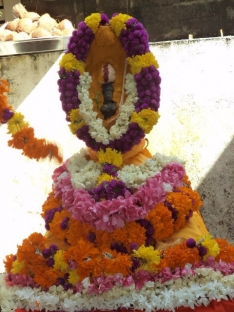Sri Naga Devar


On the fifth day of the bright half of Shravan people worship the snake, “nag”. The day is known as “Nag Panchami”. Naga Panchami is a sacred Indian festival dedicated to the snake-God. The festival gets its name from the fact that it is celebrated on the fifth day (panchami) of the moonlit fortnight of the Hindu month of Shravan (July /August). The exact origins of the Nagapanchami festival is uncertain. It is not known when the worship of snakes and the snake-god precisely began. The mere sight of the slithering reptile gives many of us a creepy feeling and hence, the worship of snakes in India appears strange to many people, especially those not familiar with Hindu customs. But then, snakes have been associated with many Hindu Gods. Sheshnaga (Snake with Six hoods) is the vehicle of Vishnu. The world according to Hindu mythology and cosmogony, rests on the head of Sheshnaga, and when he shakes his head we have earthquakes. The custom of snake-worship is believed to have come from the “Naga” clan, a highly developed tribe who lived in ancient India. The Indus Valley civilisation of 3000 B.C. gives ample proof of the popularity of snake-worship amongst the Nagas, whose culture was fairly wide-spread in India even before the Aryans came. Later, the Indo-Aryans began to worship many of the snake deities of the Nagas and some of them even found mention in the Hindu Puranas.






